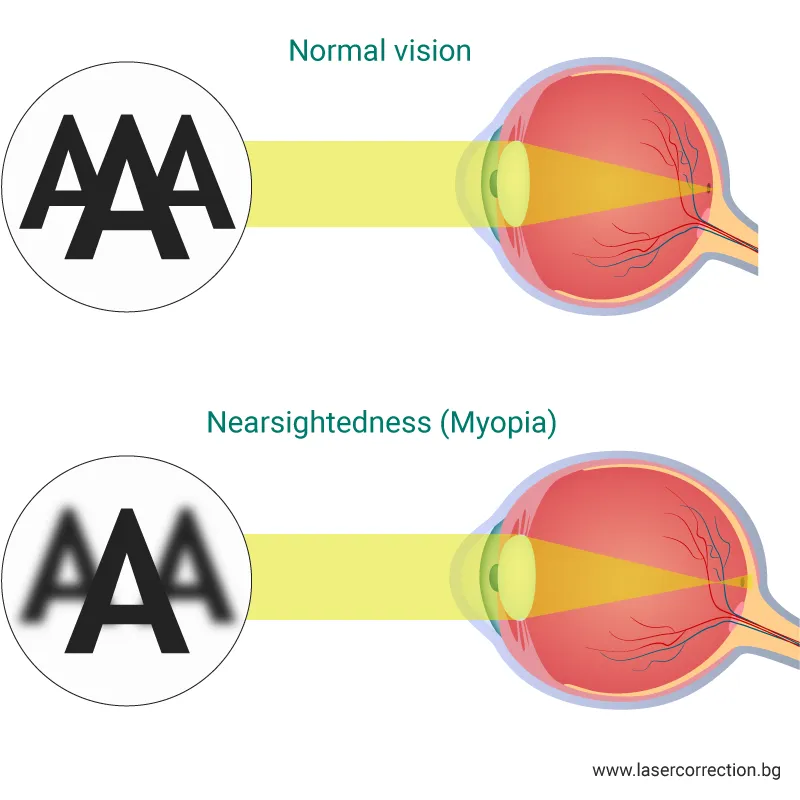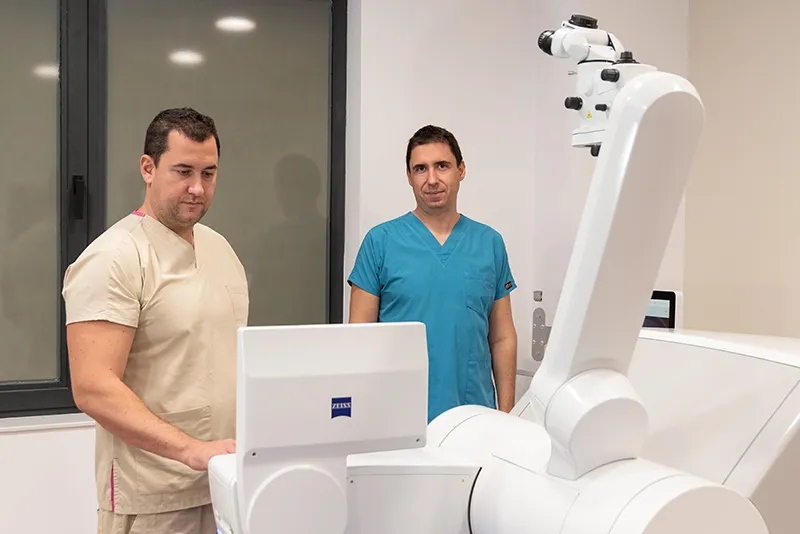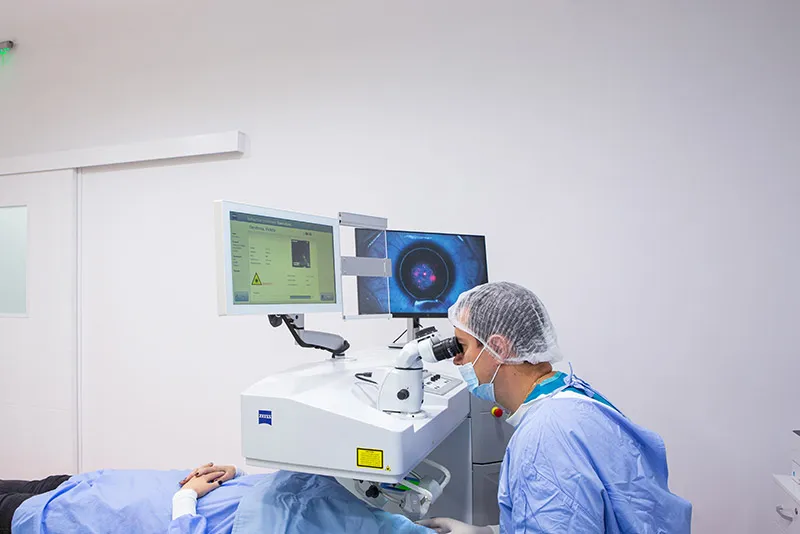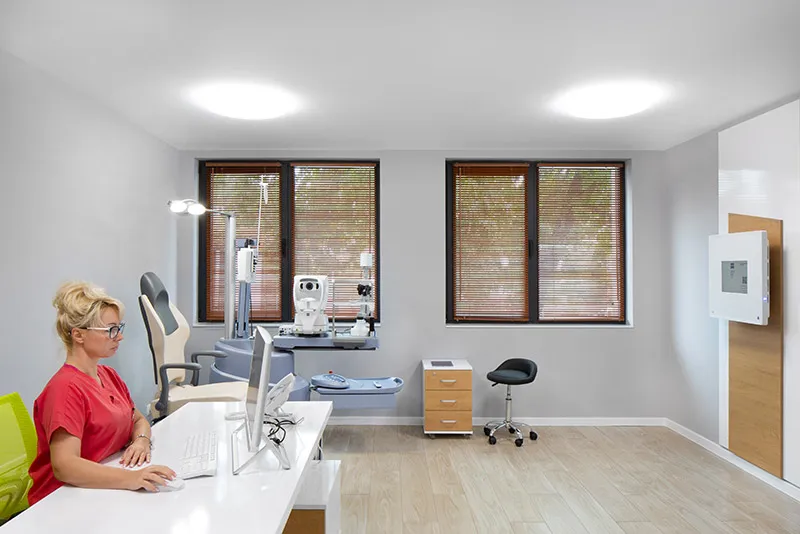Nearsightedness (Myopia)
What is Nearsightedness (Myopia)?
The nearsightedness is a condition, which in most cases appears during the childhood and lasts for the whole life. Myopia is a common eye condition, where the patients see clearly close objects, but the distant objects are unclear and blurred. Depending on the degree of nearsightedness, the patients see clearly at different close distances, but always have difficulties in seeing objects at far distances.
Nearsightedness (Myopia)

Nearsightedness (Myopia)
Normal eye

Normal eye
The nearsightedness (myopia) may be developed gradually or sometimes very fast, as often the vision deteriorates during the childhood or adulthood. It has the tendency to be passed from parent to child.
Vision in Nearsightedness (Myopia)
The nearsightedness is a condition, in which the close objects are seen clearly, but the distant images are blurry – the eye is too long for its optical power, or the cornea is bulging. In this condition the light is focused in front of the retina. The nearsightedness is usually treated with glasses, contact lenses or refractive surgery (laser eye correction).

Symptoms of Nearsightedness (Myopia)
If you have nearsightedness, you may experience the following symptoms:
- Blurred distant objects
- Crossing the eyes or squinting in order to see distant objects
- Headache caused by eye straining
- Difficulty seeing objects while driving, especially at nighttime (night myopia)
The nearsightedness is usually diagnosed during childhood or between the early school years to the teenage years. A child with myopia may have the following symptoms:
- Frequent squinting
- Need to sit closer to the TV, cinema screen or the blackboard at school
- Difficulty in recognizing distant objects
- Excessive blinking
- Frequent eye rubbing
Shortsightness (Myopia) could appear and progressively develop in adults. This is most commonly an early sign of another eye disease - Cataract
Types of Nearsightedness (Myopia)
The type of myopia (nearsightedness) is determined by the optical power of the eye measured in diopters – the higher the diopter, the further in front of the retina is focused the image, therefore the more blurry are the distant objects.
- Low myopia: up to -3.0 D
- Moderate myopia: -3.0 – 6.0 D
- High myopia: from -6.0 to -15.0 D
- Progressive excessive myopia can reach up to -40.0 D
Treatment of Nearsightedness (Myopia)
For patients at age 18 – 40 years the preferred treatment is laser correction of nearsightedness (myopia). This method is completely safe, bloodless and sutureless. You can find more information at Laser correction of Nearsightedness (Myopia).
In patients above 40 years of age there is another method for correction of nearsightedness. The implantation of soft multifocal lenses offers excellent vision and prevention of eye diseases, which may appear with the age (cataract).
Laser correction of Nearsightedness (Myopia)
Eye Clinic Luxor has many years of experience in treatment of nearsightedness with laser correction of the vision or with implantation of multifocal lenses. More than 30 000 patients trust our professionalism each year, as more than 2000 patients are operated in the hospital. Depending on your age, vision and specific needs, we can offer you the best option for your excellent vision.


Other refractive errors
In addition to nearsightedness (myopia), other refractive errors include:
Farsightedness (Hyperopia)
This is a condition, in which the cornea has too little curvature or the eyeball is shorter than the normal. When the eye is relaxed the light never focuses on the retina, but behind it. The symptoms of farsightedness are determined by the age of the patient and the degree the condition, and include headache, unclear vision at close distance and blurred vision at close and far distance.
